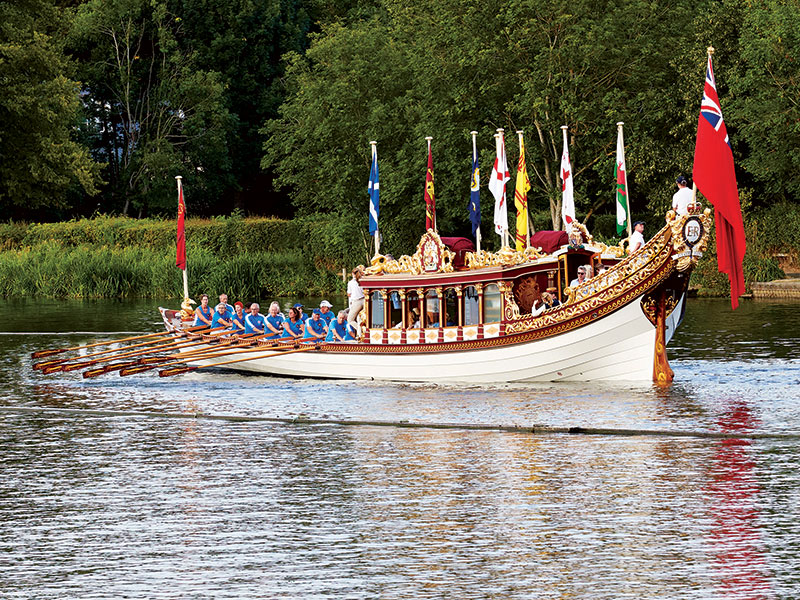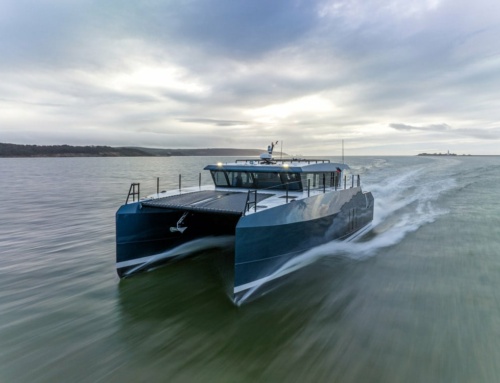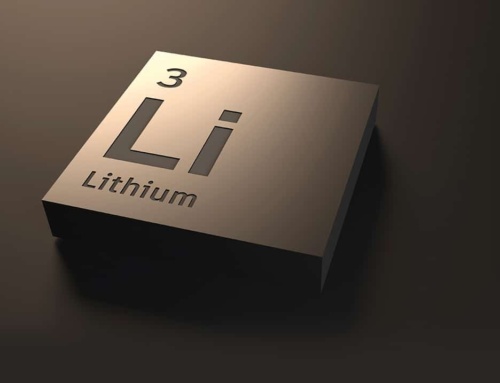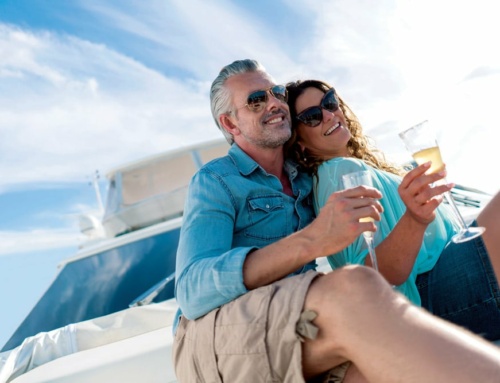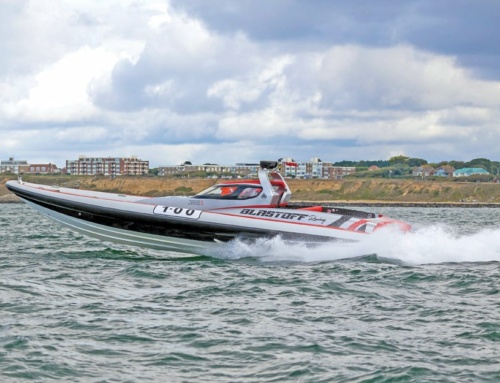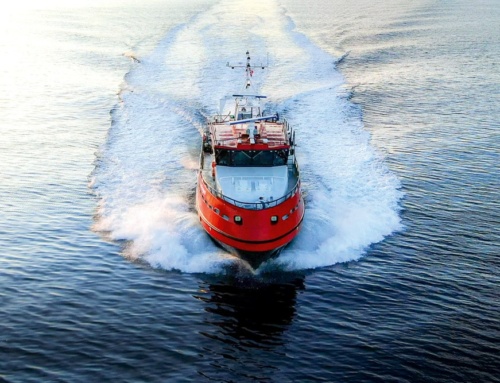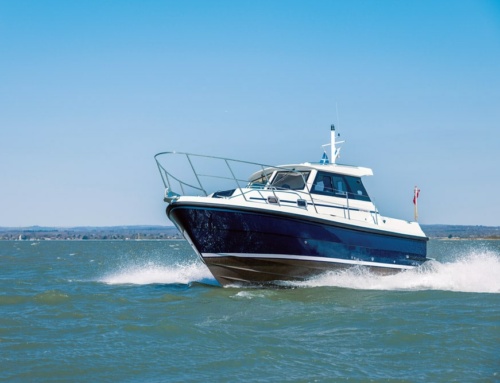- Today, Gloriana has been in service for some seven years, and in addition to the usual servicing and repair work, she has also undergone a major change in her Motiv power system.
- When the drawings for Gloriana were originally produced, allowance was made for an auxiliary propulsion system.
Mike Taylor reports on the creation of a vessel fit for a Queen …
In mid 2009, Lord Sterling was contacted over an idea originated by Buckingham Palace concerning a suitable vessel to take HM The Queen and the Royal Family upriver to Hampton Court to celebrate her Diamond Jubilee. With experience gleaned from spending 22 years at the helm of P&O and his links with the Royal Navy, Lord Sterling was perfect for the project. Later, plans were crystallised when Lord Sterling visited the workshops of gifted boatbuilder and artist Mark Edwards, where he saw illustrations of bygone row barges.
Initial discussions involving BAE and Southampton University, though valuable, came to nought. At this point, a small team was formed, led by Lord Sterling himself, comprising naval architects Stuart Roy and Ed Burnett, master boatbuilder Mark Edwards and project manager Damian Byrne, whose role would involve liaising closely with the Maritime Coastguard Agency over seaworthiness and operational regulations concerning compliance for a passenger-carrying vessel, and Lloyd’s Register to approve its design. Historical input regarding operational aspects was provided by Simon Stephens, a curator at the National Maritime Agency.
In an amazingly short time, Mark Edwards had assembled a highly skilled workforce of some 60 craftsmen and three youngsters from The Prince’s Trust, the project being initiated at a secret location in West London. Essential to the overall look and functionality of the craft was the aft-located saloon and the addition of beautiful gold-finished decoration befitting its royal status. Using clinker construction techniques dating back to Viking times, the barge comprised an Iroko keel, sawn frames and planking, with sweet chestnut for the rowing benches and much of the coach cabin interior. Working double shifts virtually every day, within a remarkable 19 weeks she was completed, the vessel bearing a striking resemblance to the Lord Mayor’s row barge as depicted in a painting by Giovanni Canaletto of 1746.
HRH The Queen gave her permission for the vessel to be christened Gloriana in memory of the name given by 16th-century poet Edmund Spenser to a character representing Queen Elizabeth I, and on 26th April, on a very wet pier in Deptford, she was named by Her Majesty in the company of HRH The Duke of Edinburgh on their way to Greenwich.
Today, Gloriana has been in service for some seven years, and in addition to the usual servicing and repair work, she has also undergone a major change in her Motiv power system. To understand more about this elegant row barge and the reasons behind the change, I met up with Gloriana’s project engineer Damian Byrne MVO, who remains closely associated with her operation.
On board, Damian began by explaining the craft’s construction: ‘She’s built around four longitudinal girders spaced across the vessel running the full length of the barge with six watertight bulkheads to give outstanding longitudinal and torsional stiffness. Overall, she weighs some 10 tonnes lightship and in manual mode it takes 18 oarspeople to drive her.’
When the drawings for Gloriana were originally produced, allowance was made for an auxiliary propulsion system. To complement her oar power when moving against the tide, in confined spaces and when the oarsmen were not aboard, she was fitted with twin electric motors powered by large batteries. Control for these motors is located at the helm position at the very stern of the barge.
‘The first power units were provided by the Lynch Motor Company and were particularly compact, permanent magnet electric motors and ideal for our purposes, which we installed in the aft bilge,’ Damian continued. ‘The engines were air-cooled and powered by a 48V battery supply system and produced about 10kW of power, although we only ever ran them at 5 to 8 kW in service to conserve battery life.’
The Lynch motors were mounted quite close together to ensure the propellers were in the correct location. Damian remarked: ‘The big unknown when we chose Lynch was the battery technology, and we selected a system of cells made in China. These were suitable to power the motors and could be connected to the control software management system we specified. In turn, the battery manufacturer was happy to work with us over supplying a process that met our operational and redundancy requirements.’
Sadly, from the outset there were problems with the battery cells and the battery management system, and Damian said he lost confidence in their reliability and functionality. ‘That was the enabler for my meeting with Torqeedo about replacement motors, batteries and a system management package. Two years on and I am very pleased with the result ‒ we have sufficient confidence in the system that we trust it entirely in operation.’ However, there was a downside to selecting the Torqeedo solution: ‘The Lynch motors were small enough that they could be mounted facing each other and angled inwards across the keel. When we changed to the larger Torqeedo motors we needed to make modifications to the mountings, as unlike the air-cooled Lynch units, these motors feature water jackets for cooling, making them considerably deeper. Each motor has a small Whale electric bilge pump, which circulates water through stainless steel jackets round the motors and then discharges the water through valves to outlets at the waterline. This dictated that we had to rotate the top of the power leg outboard to give us the necessary clearance between the motors while maintaining the propellers in the same place, remaining in the deepest part of the water with the correct trim angle. The control boxes and inverters are mounted on the motors and are also water-cooled.’
For a twin-screw installation like that fitted to Gloriana the propellers can be contra- rotating, but in this case, Damian chose for them to rotate in unison. ‘Because of the trim of the boat it means there is little benefit to have them turning in opposition, being so close to the centre line,’ he acknowledged. ‘However, we did find there is a difference in the severity in the wash when we trialled the boat with contra-rotation props.’
The original batteries that powered the Lynch motors were 100Ah 3.2V cells running at 48V, which dictated that the links between the cells were a combination of series and parallel connections. The cells that power the Torqeedo motors are all connected in series, so managing these batteries is a much simpler process. ‘The LMC motors were compact and powerful, but the issue we had was in managing the battery reliability, and that was the only reason for changing to the Torqeedo type powered by JCI cells,’ explained Damian. ‘When we made the alteration we connected the batteries in two banks for each motor such that we have 100% redundancy. Torqeedo incorporate a data management and logging device, so we are continuously monitoring the battery banks. This will identify a problem in advance and alert us while the system takes the necessary steps by switching to the spare bank.’
A quick glance revealed the battery installation is very substantial. ‘They weigh around 150 kilograms each and comprise four banks of cells in two compartments, one driving the port motor, the second driving the starboard motor with 100% redundancy, so if one battery fails the second will take over,’ Damian explained. ‘In their favour, Torqeedo offer a nine-year diminishing warranty on these cells, because like anything mechanical and electronic a lack of use is often worse than overuse for longevity.’
The connections between the batteries, the charging sockets, the motors and the software control module comprise a computer cable, a power cable and an earth bus. ‘The whole purpose of a boat of this size and type is silent rowing,’ Damian remarked. ‘The electric propulsion system is in vogue and projects the right message and emphasis. Moreover, let us not forget that the pioneers of motor boating on the River Thames used electric propulsion well before the internal combustion engine came into use.’
At the time when I visited her, Gloriana was about to be put back in the water after her winter lay-up and service. The electrical system is taken out of winter mode, the batteries will be put on charge and the engines will be run up on her moorings. This cycle will be repeated several times before she is slipped and taken upriver to St Katherine Docks, a journey that with a favourable tide will take some three hours.
‘The distance is about 22 miles, though with the tide with us it will seem more like 17 miles in terms of drain on the battery, using only around 50% of the available battery power,’ Damian told us. ‘We never let it get below 20 to 30 % of available power for obvious reasons. Overall, we have been extremely pleased with the Torqeedo motors and JCI battery system and look forward to many more years of problem-free service.’
Significantly, underway Gloriana flies the Royal and City standards, along with the traditional flags of the United Kingdom, and 16 crests representing the Realms of the Commonwealth. Concludes Lord Sterling: ‘Gloriana always captures the affection of the public, and I think we got her design just right. With good maintenance she should last 200 years, providing a lasting legacy of Her Majesty The Queen’s Diamond Jubilee and the promotion of the River Thames, particularly for young and disadvantaged people.’
Specification
- Cost: £2million privately sourced
- Project initiated: April 2011
- Launched: 19th April 2012
- Presented to Her Majesty Queen Elizabeth II: 25th April 2012
- Queen’s Diamond Jubilee: 3rd June 2012
- Total carrying capacity: 52 persons (30 passengers, 18 oarspeople, 4 crew)
- LOA: 26.65m (88ft)
- Beam: 3.795m (12ft 6in)
- Displacement lightship: 11 tonnes
- Displacement full load: 15 tonnes
- Engines: Phase 1: 2 x Lynch 14kW 48V Pancake motors supplied by Lynch Motor Company Limited
- Phase 2: 2 x Torqeedo Deep Blue 40 Saildrive supplied by Torqeedo GmbH
- Speed: 4–4.5 knots at a reasonable rowing speed on the tidal pageant course
- Speed under Torqeedo drive: Max. speed 8 knots under electric propulsion
- Service speed: 5 knots with 6-hour endurance
- Construction: Keel, from sawn frames and floors made from Iroko
- Planking using West Epoxy bonding, fastened with bronze screws
Contact
Our thanks go to Damian Byrne MVO for his help with this article.
Mike Taylor
Classic Powerboat & Classic Car journalist
Tel: 00 (44) 01892 654418 / 07760 430219
Website: www.miketaylorwords.co.uk
LinkedIn: www.linkedin.com/in/mike-taylor-621b964

